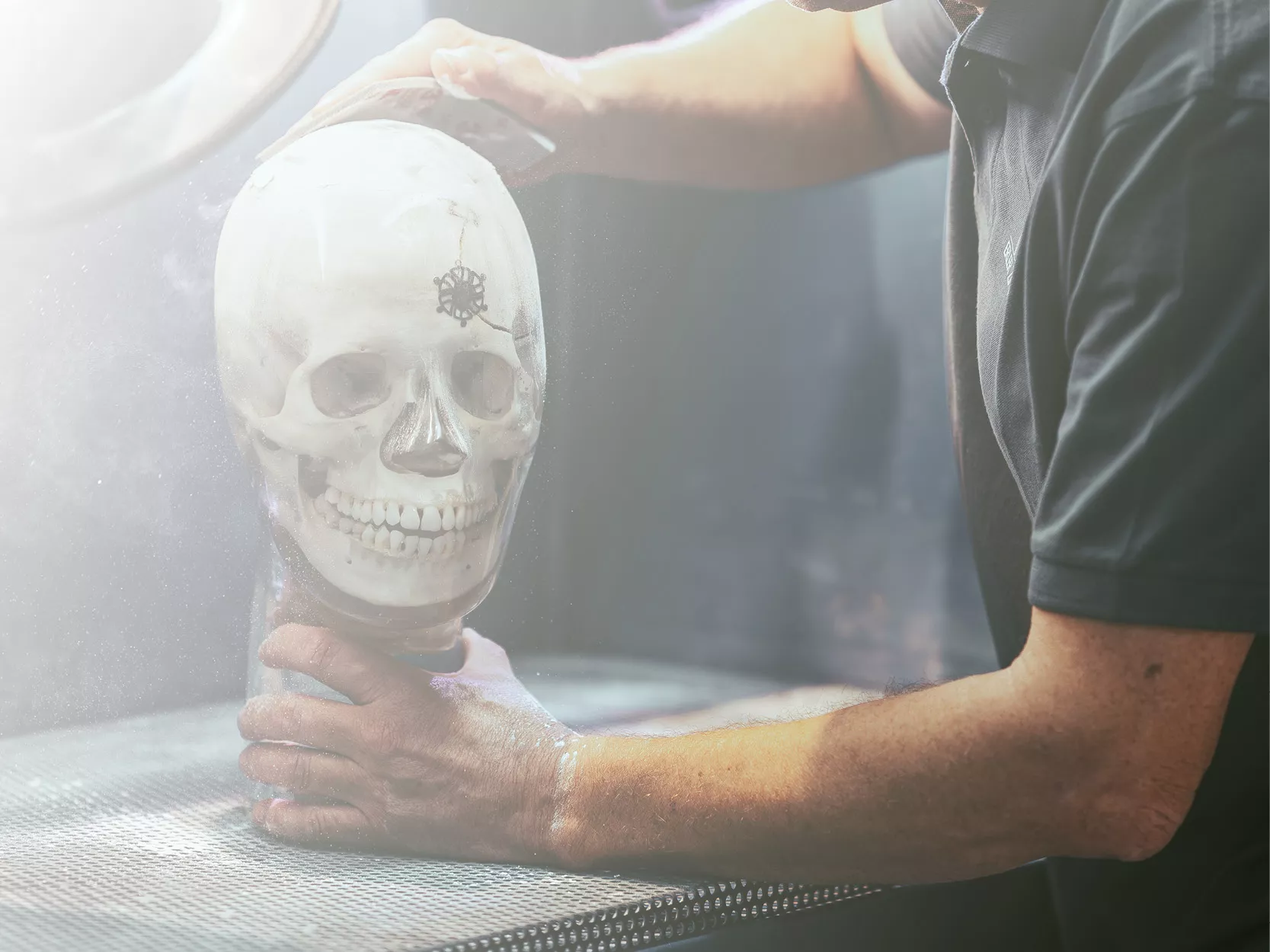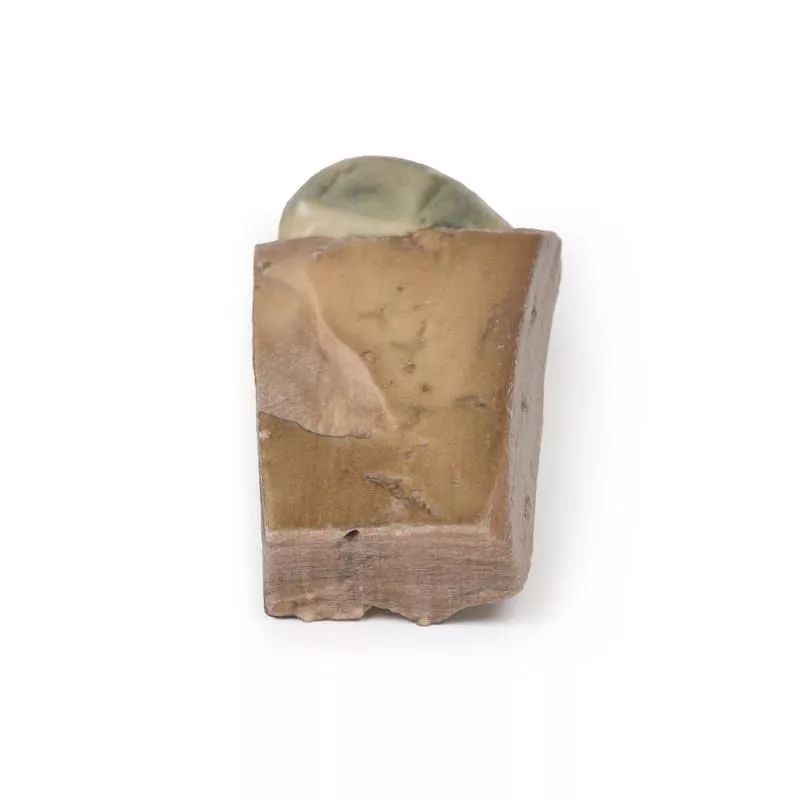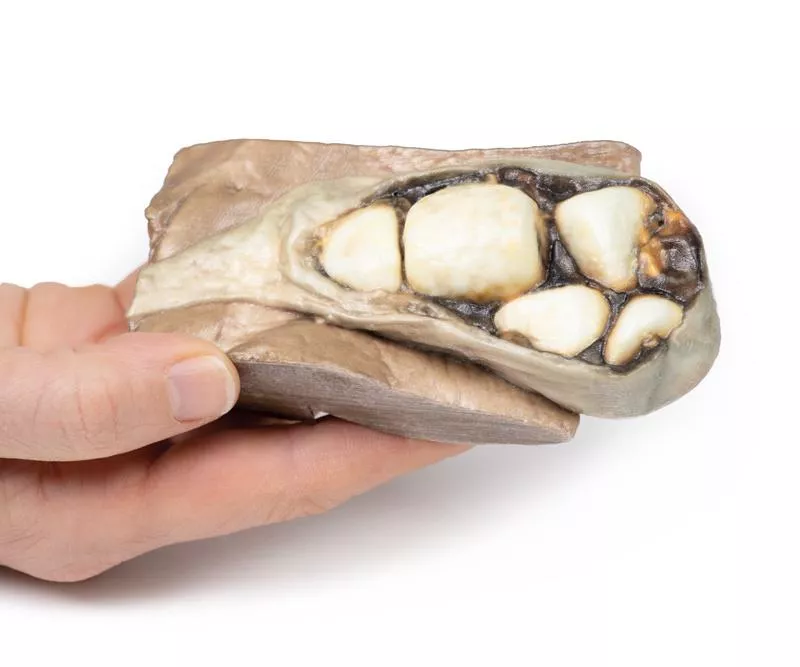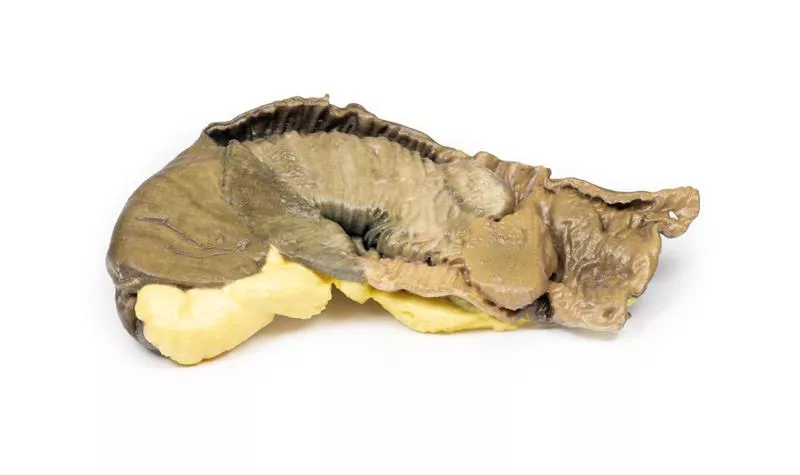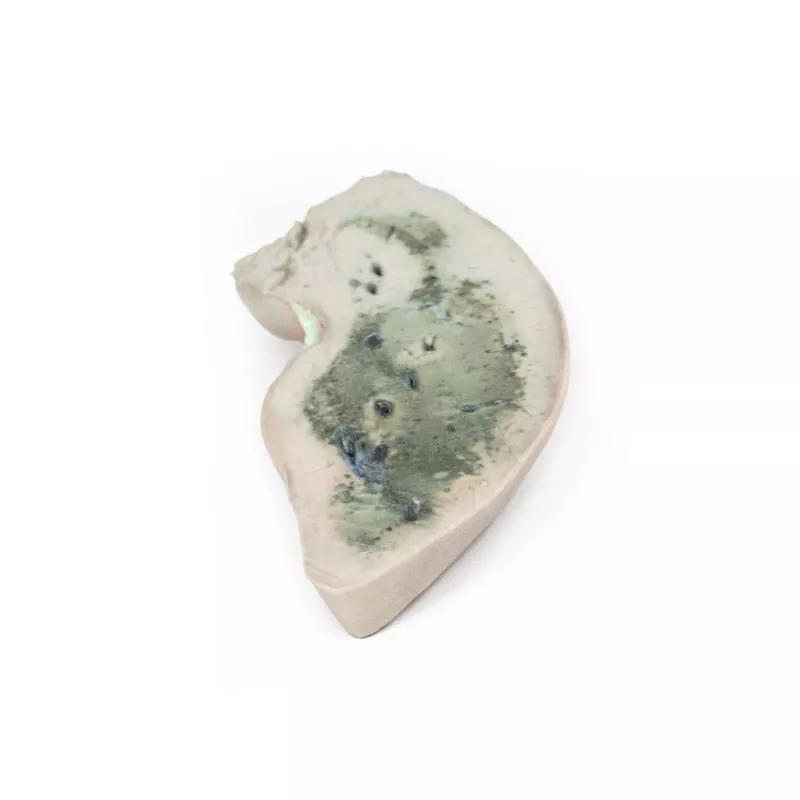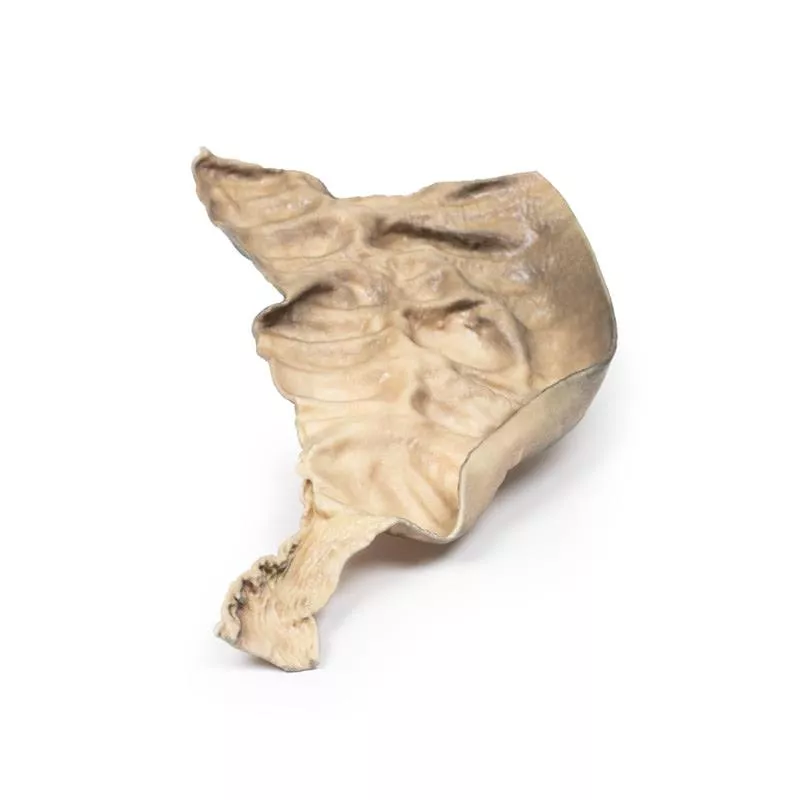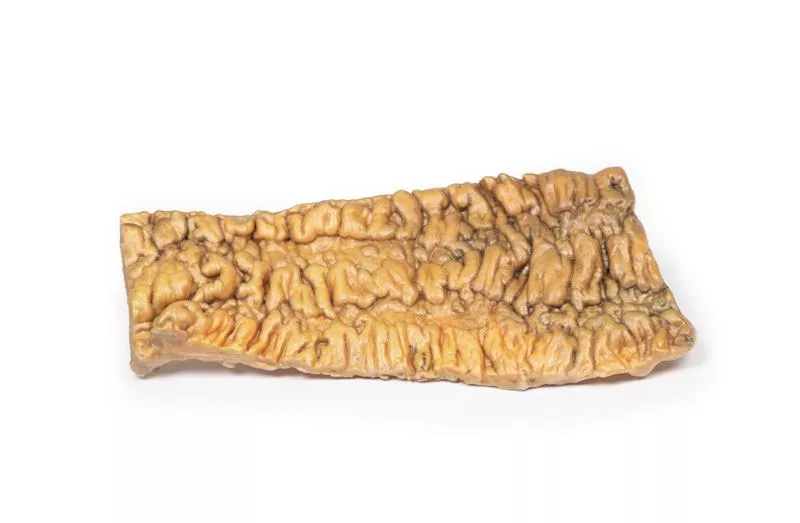Product information "Cholelithiasis (Gallstones)"
Clinical History
A middle-aged woman experienced recurrent epigastric pain. Endoscopy revealed no ulcers, but a cholangiogram showed a non-functioning gallbladder. She later died from a myocardial infarction.
Pathology
The specimen shows a liver section with an opened gallbladder containing six large faceted mixed gallstones – a classic case of cholelithiasis.
Further Information
Gallstones consist of cholesterol, calcium salts, bilirubin and mucin. Risk factors include age over 50, female sex, pregnancy, diabetes, rapid weight loss, and certain medications. Symptoms range from no complaints to biliary colic, cholecystitis, or pancreatitis. Typical signs are upper abdominal pain, nausea, and vomiting. Diagnosis is mainly done with ultrasound, and in some cases HIDA scan. Treatment begins with analgesia; often followed by laparoscopic cholecystectomy. Though rare, severe complications can be fatal. Importantly, epigastric pain can mimic heart attack symptoms, particularly in women, so cardiac causes must be ruled out with an ECG.
A middle-aged woman experienced recurrent epigastric pain. Endoscopy revealed no ulcers, but a cholangiogram showed a non-functioning gallbladder. She later died from a myocardial infarction.
Pathology
The specimen shows a liver section with an opened gallbladder containing six large faceted mixed gallstones – a classic case of cholelithiasis.
Further Information
Gallstones consist of cholesterol, calcium salts, bilirubin and mucin. Risk factors include age over 50, female sex, pregnancy, diabetes, rapid weight loss, and certain medications. Symptoms range from no complaints to biliary colic, cholecystitis, or pancreatitis. Typical signs are upper abdominal pain, nausea, and vomiting. Diagnosis is mainly done with ultrasound, and in some cases HIDA scan. Treatment begins with analgesia; often followed by laparoscopic cholecystectomy. Though rare, severe complications can be fatal. Importantly, epigastric pain can mimic heart attack symptoms, particularly in women, so cardiac causes must be ruled out with an ECG.
Erler-Zimmer
Erler-Zimmer GmbH & Co.KG
Hauptstrasse 27
77886 Lauf
Germany
info@erler-zimmer.de
Achtung! Medizinisches Ausbildungsmaterial, kein Spielzeug. Nicht geeignet für Personen unter 14 Jahren.
Attention! Medical training material, not a toy. Not suitable for persons under 14 years of age.








